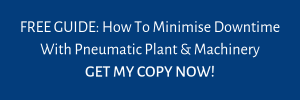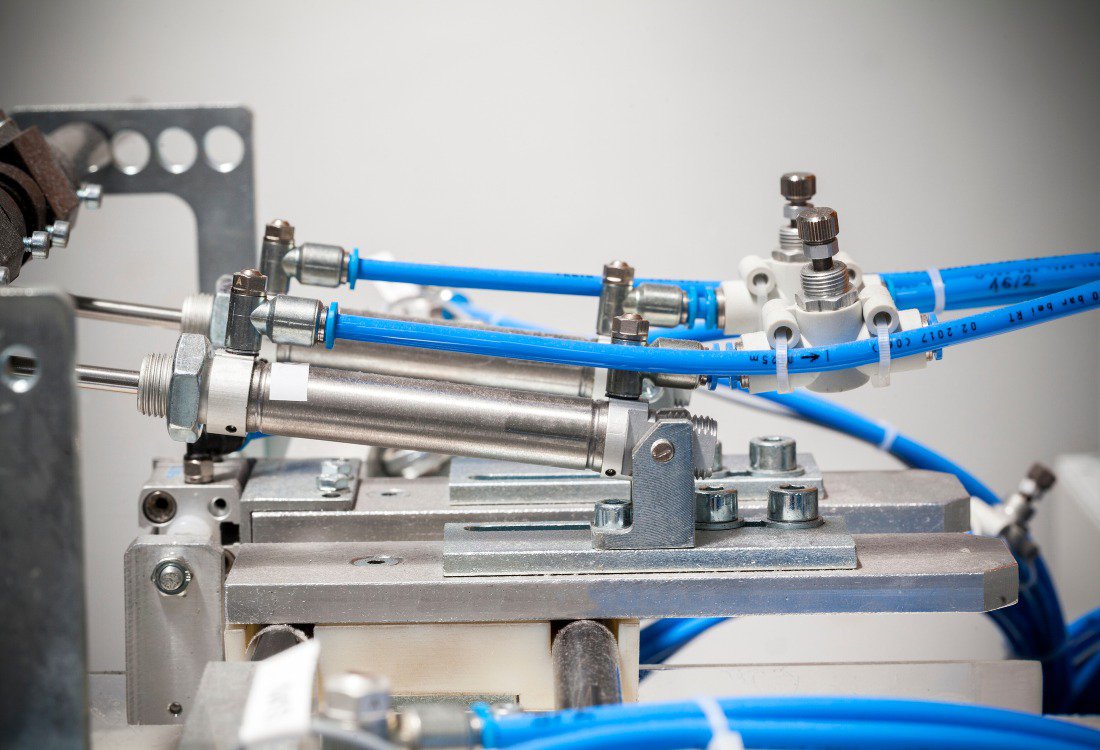Fluid power systems, while eminently useful, have never had a reputation for being particularly quiet. Unfortunately, excessive noise has the potential not only to compromise worker comfort but can also pose long-term health risks such as hearing loss and tinnitus. This situation, however, is changing, with a new generation of pneumatic applications being better optimised to tackle the workplace challenges associated with noise pollution and safety risks.
Thanks to advancements and emerging trends in pneumatic technology, engineers now have access to a greater range of tools to mitigate noise and enhance workplace safety. This article looks at the latest developments, with a focus on products such as Festo pneumatic silencers and the role of advanced hydraulic test equipment in maintaining system reliability.

Noise Pollution In Industrial, Construction, And Manufacturing Settings
Noise-related hazards are a pressing concern in many industries where pneumatic tools and systems are used on a daily basis. Air compressors, impact wrenches, die grinders, and other pneumatic tools often produce noise levels exceeding 85 decibels (dB), crossing safe exposure thresholds outlined by regulations such as the Control of Noise at Work Regulations 2005 in the UK.
Prolonged exposure to high noise levels can contribute to:
- Hearing impairment or loss over time.
- Operator fatigue, reducing productivity and increasing the likelihood of workplace errors.
- Communication difficulties, leading to miscoordination in critical operations.
Safety Risks In Pneumatics
Pneumatic systems also utilise highly pressurised air that, if mishandled, can cause sudden equipment failures or accidents. Key safety concerns include:
- Uncontrolled pressure release, leading to physical hazards, accidents, and injuries.
- Equipment malfunctions due to improper maintenance or substandard components.
- Human exposure to high-pressure air, which can cause severe injuries to the eyes.
The combination of these challenges necessitates adopting innovative technologies that prioritise noise reduction and safety enhancements without compromising system performance.
So, how are the latest innovations in pneumatic technology addressing these issues?
Innovations For Noise Reduction And Control
Festo Pneumatic Solutions
Festo pneumatic silencers represent a leap forward in controlling the noise associated with air exhausts in pneumatic systems. These silencers reduce the sound generated during the release of compressed air, lowering operational noise to safer levels.
Noise Reduction Capabilities
Festo silencers can reduce exhaust noise by up to 30dB, significantly enhancing workplace conditions. With their optimised design, these silencers minimise acoustic emissions while maintaining airflow efficiency.
Applications
Festo pneumatic silencers are ideal for use in industries such as:
- Automotive assembly lines, where repeated actuation creates high noise levels.
- Food and beverage manufacturing, ensuring compliance with noise exposure limits.
- Medical device production, necessitating quieter environments for advanced manufacturing.
Noise-Dampening Pneumatic Tools
Recent innovations in noise-dampening pneumatic tools, such as quieter compressors equipped with integrated noise-reduction technologies, offer holistic solutions. Features include:
- Low-vibration motors, which reduce both noise and operator fatigue.
- Built-in sound insulation, designed to lower acoustic emissions.
For example, pneumatic air tools such as die grinders and sanders now feature embedded silencers and vibration-dampening technology, making them suitable for environments where noise is heavily regulated, such as indoor renovation projects.
Acoustic Simulations In Pneumatic Design
Innovative software solutions now allow engineers to design pneumatic systems with noise reduction in mind. Acoustic simulation tools model the noise levels of components before physical assembly, enabling engineers to optimise system configurations for quieter operations. This technology has proven particularly beneficial in industries deploying complex systems with multiple noise-generating components.
Innovations To Improve Safety For Pneumatic Applications
Intelligent Safety Mechanisms
Many modern pneumatic systems incorporate intelligent safety features to prevent accidents and improve reliability. Examples include automatic pressure relief valves that release excess air to avoid overpressure scenarios, and fail-safe mechanisms, such as emergency shut-off valves, that activate when system parameters exceed safe thresholds. These safety innovations ensure that systems can operate continuously in demanding environments without risking damage to components or harm to operators.
Integration With Hydraulic Test Equipment
Hydraulic test equipment is instrumental in verifying the integrity and safety of pneumatic systems. Advanced test rigs now allow for simultaneous testing of hydraulic and pneumatic components, ensuring compatibility and safety under realistic operating conditions.
For instance, test equipment helps identify leaks in both pneumatic circuits and hydraulic test equipment, reducing the risk of sudden failures and ensuring compliance with strict safety standards. Through test simulations, engineers can also assess how pneumatic systems will perform in various scenarios, identifying weak points before deployment.
Next Steps
Fluid power engineering has a key role to play in improving safety and comfort for workers in the construction, manufacturing, and other sectors. To discover how the latest innovations in pneumatics can deliver improved outcomes for your operators, please contact Hydrastar today by calling 01353 721 704, or send us a message by clicking here.

Image source: Canva

